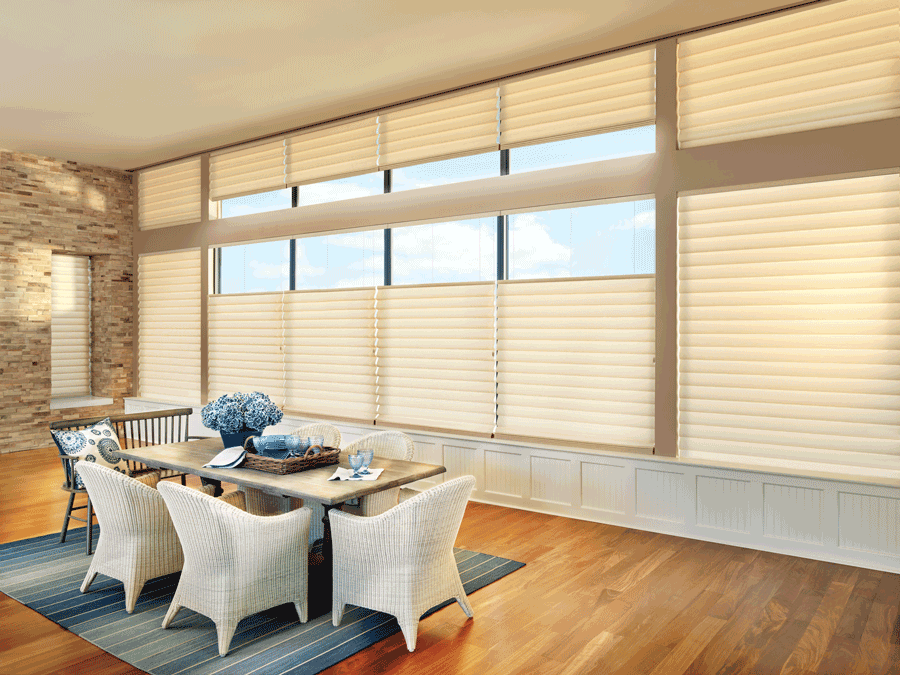Blinds for floor to ceiling windows offer both practicality and aesthetic appeal in modern interior design. Discovering the ideal blinds for these expansive windows can transform your space, providing privacy, light control, and enhancing the overall ambiance. In this comprehensive guide, we’ll explore everything you need to know about selecting blinds for floor to ceiling windows, from design considerations to installation tips and maintenance.

Understanding the Importance of Blinds for Floor to Ceiling Windows
Floor to ceiling windows are a stunning architectural feature that floods interiors with natural light and offers panoramic views. However, they also present challenges such as privacy concerns and excessive glare. Blinds provide the perfect solution by offering:
- Privacy Control: Maintain privacy without sacrificing natural light by adjusting the blinds.
- Light Management: Control the amount of sunlight entering the room, preventing glare and UV damage to furniture and flooring.
- Energy Efficiency: Properly chosen blinds can help insulate the room, reducing heat gain in summer and heat loss in winter.
Types of Blinds for Floor to Ceiling Windows
Several types of blinds are suitable for floor to ceiling windows, each offering unique benefits:
- Vertical Blinds: Vertical blinds are a popular choice for large windows as they can be easily adjusted to control light and privacy. They are available in various materials such as fabric, vinyl, and wood, offering versatility in design.
- Panel Track Blinds: These blinds feature large fabric panels that slide back and forth on tracks. They are sleek and modern, ideal for contemporary interiors with floor to ceiling windows.
- Roller Shades: Roller shades are simple yet effective, rolling up and down to cover the window. They come in a variety of fabrics, including blackout options for enhanced light control.
- Roman Shades: Roman shades offer a soft, elegant look when raised and provide complete coverage when lowered. They are available in light-filtering and blackout materials.
Factors to Consider When Choosing Blinds
When selecting blinds for floor to ceiling windows, consider the following factors to ensure they meet both your functional and aesthetic needs:
- Window Size and Shape: Measure accurately to ensure the blinds fit properly and function smoothly.
- Light Control Options: Decide whether you need blinds that offer complete blackout, light filtering, or sheer options.
- Material and Color: Choose materials and colors that complement your interior decor while considering durability and maintenance requirements.
- Operation and Accessibility: Consider how the blinds will be operated, especially for tall windows. Motorized options may be convenient for hard-to-reach areas.
- Energy Efficiency: Some blinds are designed to improve energy efficiency by reducing heat transfer through windows.
Installation Tips for Blinds on Floor to Ceiling Windows
Proper installation is crucial for the functionality and longevity of your blinds. Follow these tips for a successful installation:
- Use Proper Mounting Hardware: Ensure that the mounting hardware is suitable for the weight and size of the blinds, especially for tall windows.
- Leveling: Use a level to ensure the blinds are installed straight and operate smoothly.
- Safety Considerations: For homes with children or pets, choose blinds with cordless options or ensure cords are properly secured and out of reach.
- Professional Installation: Consider hiring a professional installer, especially for motorized blinds or if you’re unsure about DIY installation.
Maintaining Blinds for Floor to Ceiling Windows
To keep your blinds looking great and functioning well:
- Regular Cleaning: Dust or vacuum blinds regularly to prevent dust buildup. Use a damp cloth for deeper cleaning when necessary.
- Inspect for Damage: Check blinds periodically for any signs of wear or damage, such as broken slats or malfunctioning mechanisms.
- Operate Carefully: Handle blinds gently when opening and closing to avoid bending or breaking slats.
- Professional Cleaning: For fabric blinds or when deep cleaning is required, consider professional cleaning services.
Where to Buy Blinds for Floor to Ceiling Windows
Finding the perfect blinds is easier with these sources:
- Home Improvement Stores: Visit local stores that specialize in window treatments and offer a variety of styles and materials.
- Online Retailers: Websites like Amazon, Blinds.com, and Wayfair provide extensive selections with customer reviews and detailed product specifications.
- Custom Designers: Consider working with a custom window treatment designer who can create bespoke blinds tailored to your window dimensions and decor.
Read too: Elevate Your Home Décor with Exquisite Japanese Style Ceiling Lamp Designs
Conclusion
Blinds for floor to ceiling windows are a versatile and stylish addition to any home, offering practical benefits such as light control, privacy, and energy efficiency. By understanding the different types of blinds available, considering key factors in selection, and ensuring proper installation and maintenance, you can enhance your living space with beautiful and functional window treatments.